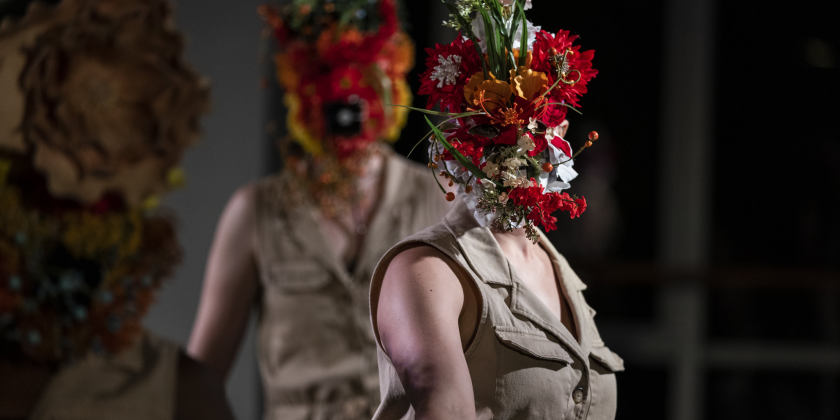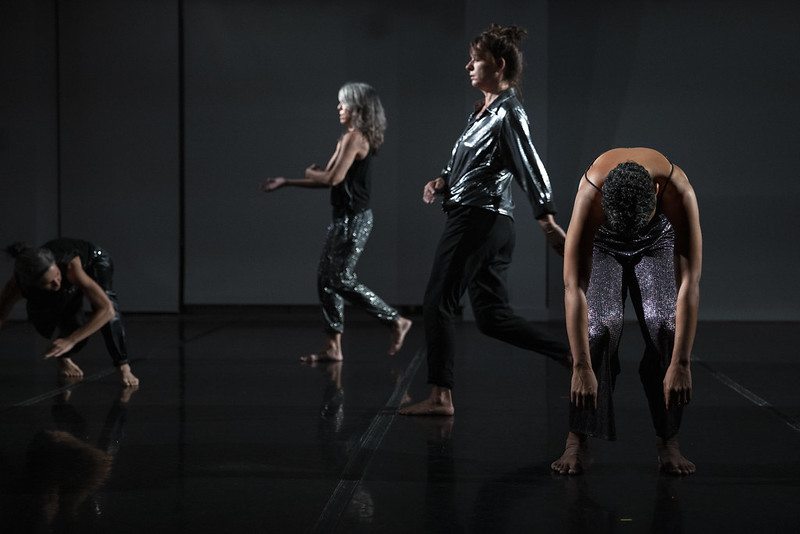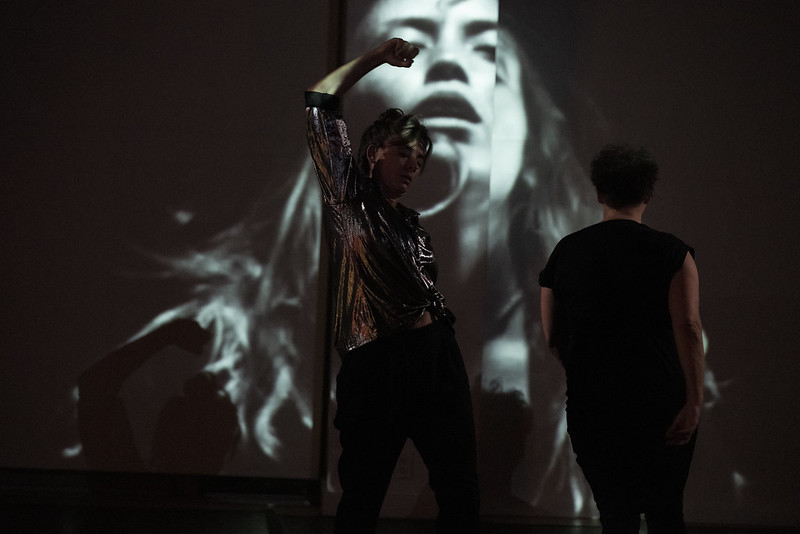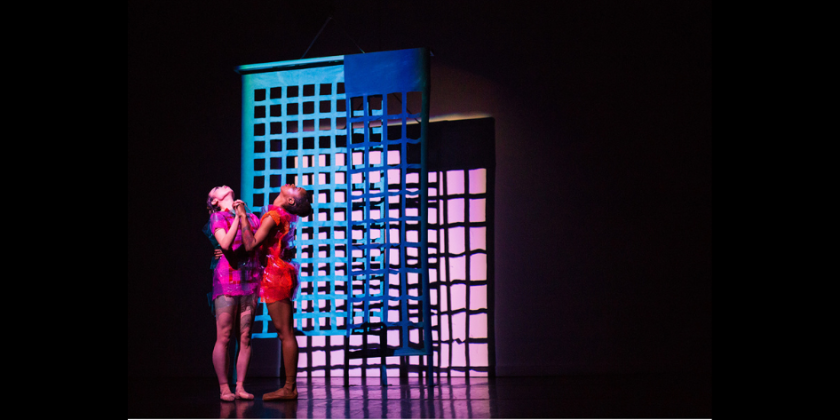IMPRESSIONS: Colleen Thomas’ “Light and Desire” at New York Live Arts

Choreographer: Colleen Thomas and the performers
Performance: Carla Forte, Ermira Goro, Rosalynde LeBlanc, Joanna Leśnierowska, Colleen Thomas, Ildiko Toth with Eleanor Altholz, Emily Giovine, Nadia Halim, Garnet Henderson, Falls Kennedy, Morgen Littlejohn, Sadi Mosko, Nicole Rondeau, Carolyn Silverman, Kennedy Thomas, Maddie Wood
Music: Robert Boston featuring Jo Morris // Lighting Design: Stacey-Jo Marine
Masks: Rebecca Makus // Film: Carla Forte with Alexey Taran as DP Dramaturgy by Adrian Silver
Colleen Thomas’ Light and Desire was slated to premiere in March 2020, right before the COVID-19 pandemic turned the world upside down. Thomas, a renowned choreographer and performing artist, started the piece in 2017 as women’s rights moved in alarming directions. She assembled an international cast, many of whom were living in countries restrictive toward women. Then she began to explore how female artists find power through confronting challenges. While the show remained on pause for 18 months, the sentiments behind it only grew in relevance. Showcasing facets of femininity throughout, Light and Desire feels like a stifled scream through which is born an exuberant declaration.

The work takes place in the third-floor studio of New York Live Arts, which celebrates its 10th anniversary this year. The viewers are positioned on the same level as the six-woman cast, who move around and through the seating area, enveloping the audience. The tone for the evening is set in the first tableau when Rosalynde LeBlanc struts out and defiantly turns on a boombox at downstage right; Joan Jett’s “Bad Reputation” blares. Just as the melody catches hold, Joanna Leśnierowska enters and abruptly shuts it off.
Movement motifs emerge, like when the women repeatedly lie face down on the floor and then catapult themselves up, signifying resilience. A gesture of waving arms is both a beckoning and a cry for help. In a notable moment, two film screens covering the transparent back wall elevate to reveal Thomas, who stands outside the space. As though lost at sea and tousled by waves, she floats back and forth, her propeller-like arm gestures growing increasingly frantic, until Lesnierowska throws her a life-raft.

A chorus of eleven women, resembling an army of Rosie the Riveters in beige, high-collared jumpsuits, is the cohesive, feminist backdrop to the six women. Halfway through, they re-emerge with coverings of flowers obscuring their faces like oxygen masks, an image reminiscent of a surrealist painting. Later, bright lights concealed inside the masks cast a patchwork of light and shadow across the stage. They occasionally blind us.
Throughout, a film by Carla Forte, projected on two screens, unfolds as a stunning backdrop to the choreography. The film zeros in on the individual women of the cast, whose faces alternate expressions of emotion and stoicism. A whirlwind of wild, floating hair, tongues licking lips, gaping mouths, and even teary eyes suggest what lies beneath the surface we see in real life. When the stage darkens, the lightness of skin, teeth, and eyeballs illuminates the dancers.
There are sexy moments where the women enchant and seduce. A quintet stands downstage, facing front. Their slinky, mesmerizing line-dance serves as a screen through which to see Forte’s curvy movement exploration as a cover of Robert Palmer’s “Addicted to Love” plays.

In the culminating tableau, four women perform conversational gestures that grow increasingly exaggerated, like they want to communicate but lack a platform for expression. Sometimes their frustration morphs into desire, as when Leśnierowska releases a long, guttural moan. Similarly, a solo by Ildiko Toth concludes with her hands alternately pulling away from her head, as though she’s trying to extract something bottled within.
“Let’s start over,” Thomas declares. The army of women re-emerges, and “Bad Reputation” blasts over the speakers; this time, the song plays through as the women march and pose in defiant unison. The lights dim over these mighty troops to end on a note of collective strength. Light and Desire asks the question: How do we, as women, define ourselves? Perhaps not by the challenges presented to us, but by the freedom we find within the confined spaces in which we’re allowed to exist.















